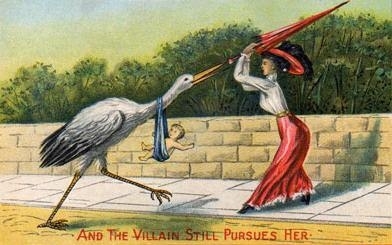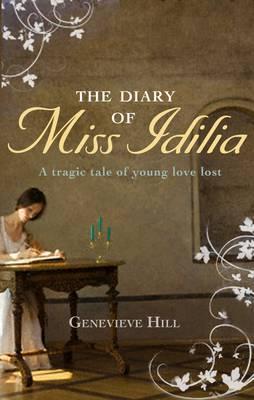
Introduction

A couple weeks ago a friend of mine sent me a link to a wild story. Apparently in 1862 the skeleton of a teenage girl was found in the ruins of an old castle in Germany. This may not have been the most groundbreaking discovery but there aside the remains, shoved into the brickwork, was a diary discussing the girl’s last few days before she died, of starvation or exposure, trapped in the ruins. Well, that was sufficiently morbid to pique my curiosity so I ordered a copy of the diary, now in print under the title The Diary of Miss Idilia.
The First Inklings of Controversy
At first glance this diary sounds like it’d be a fascinating look into a horrible tragedy but that’s really not what it is. Instead it’s a diary about the week preceding the accident, which could still be interesting. The only thing is that the family never wanted it to be published and it somehow ended up not in their hands but in the ownership of the girl’s best friend. From there it was kept until her death and “donated to an anonymous Scottish society” where a scholar found it and published it in 1951. If an anonymous Scottish Society doesn’t make you wonder then the fact I couldn’t find the name of the scholar either is a bit suspect. None the less I decided to read it because for me a fake diary can be even more thrilling than a real one.

The Story Between the Pages

I’m not going to lie. As a story this “diary” is action packed, and if you’re as twisted as I am, absolutely hilarious. However, I am struck by a few things right off the bat. The first thing I immediately noticed was that this “diary” was written in present tense, like a work of fiction, not like a journal. Generally speaking diaries are written at the end of the day, looking backwards at events. Present tense is the voice most fiction takes, where the action in each sentence is currently being acted out. It’s the difference between saying, “I enjoyed breakfast this morning” and “My breakfast is being served presently, with a side of cottage cheese.” This would only make sense if she were walking around narrating her own life on an audio recording, as it were happening, but alas! This was 1851 and the diary is hand written. This could be explained away by the fact it was written not as a personal record but as something to send her best friend back home – in other words, it could be complete and utter nonsense just made up to make her life look more interesting.
My bullshit detector was going off pretty loudly already but then the story got started! From here on out I am going to put a spoiler warning because I am going to detail the whole plot and why it’s clearly not a diary all the way through to the end.

What a doozy this story is! It describes our seventeen year old heroin as she is taking a family trip up the river Rhine on a boat. She describes her mother as a miserable drunken wretch bent on making everyone else just as unhappy as she is and her father a as simpering wife-whipped man unable to speak up for himself or anyone else. No wonder why the family wasn’t too keen on having it published!
As the scene is set our heroine finds herself foot loose and fancy free after calling off her engagement with her cheating fiancee back home. This is just as well because almost every man on the ship is completely enamored with her as if she were a sweet siren of olde. When they’re not flirting with her they’re threatening rape in scene after scene after scene. And when this isn’t an outrageous enough big fish story it gets worse when the men all start literally getting into physical brawls over her. It’s like listening to two thirteen year old boys telling each other how many times they’ve gotten laid except the Victoria girl version with flowery euphemistic language and a sense of utter sexual ignorance. I was particularly amused by seventeen year old Idilia’s blissful ignorance about the consequences of her own actions. She leads on every man she sees then gets pissed off when they pursue her, eventually blaming them for being the horn dogs they are.

Over the next eight days we are run through a gamut of crazy situations. First she’s fighting over a man that is courting both her and her mother (because why not, that makes complete sense, twenty-four year old men on ships always love to go for that mother daughter fling.) From here she falls madly in love with the one man ignoring her, he reciprocates, and then through a series of mishaps the couple finds themselves on shore with the boat pulling away. She then spends the next four days scampering around trying to catch up to the boat, sleeping in hotels with this strange man, leading him on while starting fights at night so she doesn’t lose her honor (or whatever it is she was holding under those petticoats,) and losing all their money. She tries to hitch hike and when that doesn’t work her suitor pulls a highway robbery and runs off with some old dude’s horse and carriage. Eventually the carriage breaks an axle and the horse is lost in a bet while he’s trying to win money for future hotel stays. Every time something happens to keep them permanently on shore, like the loss of all their money, some tiny fleck of good fortune comes their way and they make it by the skin of their teeth.
And then the omens start. Towards the end of the book she starts having nightmares, as does her sister, and a fortune telling gypsy refuses to read her palm because it’s just so horrible. This seems way to convenient a thing to happen in a diary right before the owner’s death.

At the very end she FINALLY gives in to her suitor’s lustful intentions in one very anticlimactic paragraph. The next morning she climbs up the rickety wooden stairs into a castle tower that crumbles beneath her and leaves her trapped at the top. There are a number of super short entries decrying how dire a situation this is and pleading that her family can hear her anguished cries. She says nothing profound, nothing heart wrenching, just describes the situation she’s found in.
From there it cuts to black. Eleven years go by and then a bizarre epilogue is hastily attached to the end. Keep in mind the prologue and epilogue should sound like they are written by a completely different person, because if it were real the author of the rest of the book would be too dead to write them. However this didn’t seem to be the case. In fact, if anything, things just get more weird.
According to the epilogue Idilia’s family returns to Germany eleven years later when her skeleton is found. They hold a funeral there, which I suppose would be a normal thing to do, except at this funeral a bedraggled gray haired man shows up and throws himself on the casket. It’s then revealed the man is her lover from the few days before her death who, taken by grief at her disappearance, goes completely mad (and gray!) in what I can only say is the most histrionic fit I have ever seen in a novel. Keep in mind he was with her for eight days, and yet Idilia was so beloved by him that her disappearance completely ruined him. This was reading worse than a dime store romance but I kept going, being as easily entertained as I am. That’s when things go from melodramatic to just downright confusing.
According to a woman in the town Idilia’s lover showed up at her place covered in a blood and holding a torn scrap of Idilia’s dress a few days after her disappearance. He tells the family that he found her remains at the top of the crumbled steps that day after piling up rubble to get up there, and accidentally rips a piece of her dress trying to get her down. But then he falls, scratches himself up, and catches a very soap opera-esque case of amnesia. He forgets he discovered her body and goes off into the sunset to become a crazed hermit mourning Idilia’s disappearance. I found this all terribly suspicious but no one else in the story did. There wasn’t one murmur of, “Well maybe that dude killed her…?” Instead the family placidly nods at the story and tell him not to tell anyone else! The authorities are never involved and the story just ends, wrapping it up with a mention of her two friends, which she was supposed to be writing the diary for, neither having received the notoriety or fame that they had so desperately wanted when they were teenagers.
My Conclusion

I’m perplexed by this entire book. I would never consider it good literature but the fact it’s a trashy Victorian big fish story makes me deliriously happy. I can’t even muster a guess as to who wrote it or why but I don’t really think Idilia herself spent eight days on the run while simultaneously writing several hundred pages in a journal in present tense. I also don’t think anything in this story is even remotely believable. It’s all way too convenient. Every event is laid out to predict or inform the next event. This is not how life works. And it’s rambling and bizarre! Even the wording makes me really scratch my head. At one point Idilia describes a possible suitor as a “loser” a word I can’t even begin to imagine a proper Victorian girl saying. Maybe duffer but loser?!
To add further insult to injury there is further speculation that Idilia died not after days of exposure but instantaneously from falling. This makes it even more unbelievable.
I am left with so many questions! This reminds me a lot of Worcester’s Turtle Boy Statue, a weird and winding tale about too many cooks in the kitchen with no blame being given to anyone. I think this may be one of those stories that might have the tiniest grain of truth at its center (perhaps there was a teenage girl found in a castle, and maybe she even did have a diary) but the rest is likely just layer upon layer upon layer of absolutely bizarre folklore and rumor. Would I suggest this book to anyone? YES. I would. But only because I think it’s inadvertently hilarious. You can totally still buy this book on Amazon and if you do, I will get a commission for making your eyes bleed. You’re welcome.


This was a delight to read. You show an impressive grasp on this subject! I specialize about Car Flipping and you can see my posts here at my blog Webemail24 Keep up the incredible work!